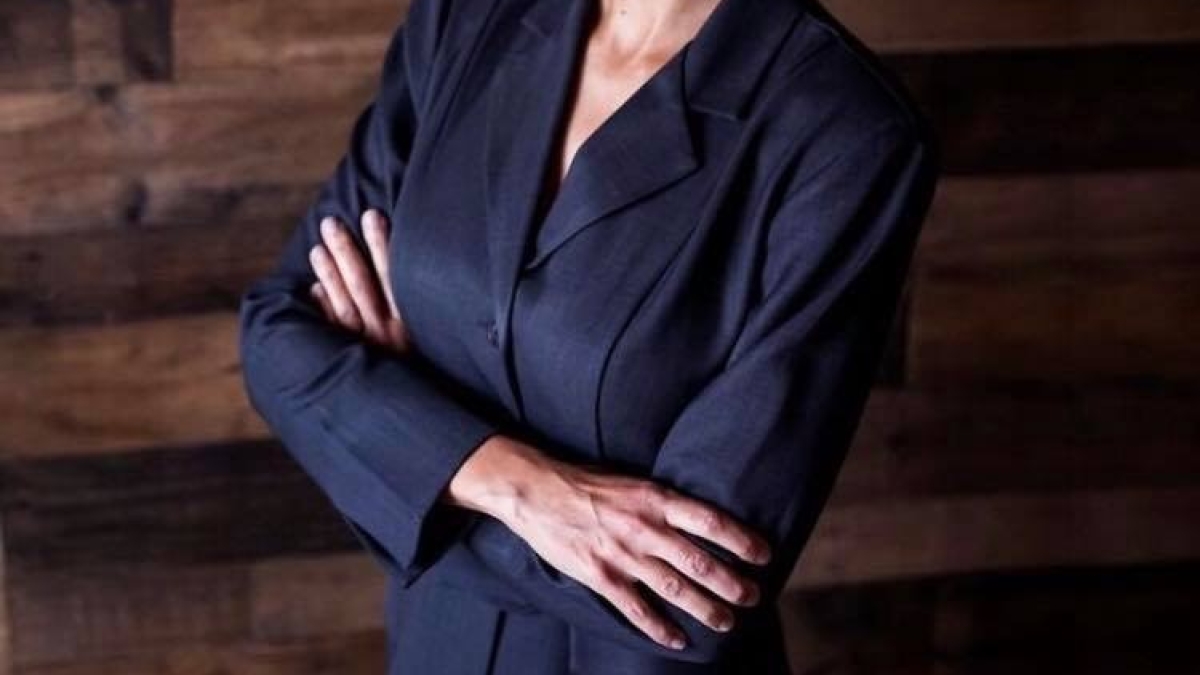Editor’s note: This is part of a series of profiles for fall 2018 commencement. Read about more graduates.
The streets in Jennifer Moreau’s Austin, Arkansas, neighborhood are saferAccording to a July 2017 National Center for Statistics and Analysis report, speed bumps in streets can break the speed of any vehicle up to 90 percent. thanks to a campaign to install speed bumps that she conceived, launched and saw through to victory.
After observing the alarming number of cars that sped around her corner lot, the online health education and promotion graduate of Arizona State University’s College of Health Solutions — and concerned mother of two — decided to take action and presented a policy brief she wrote for her health advocacy course to her city council, which approved the measure.
It’s the perfect example of one of the lessons Moreau learned as a student at ASU: “You have to work for things, and you have to make things happen.”
But she didn’t stop at speed bumps.
Spurred on by the success of that endeavor, Moreau recently ran and was elected to the Austin City Council, where she plans to continue advocating for better public health policies. In the spring, she’ll also begin studying for her master’s degree in psychology through ASU’s New College of Interdisciplinary Arts and Sciences.
“Throughout my health education degree, I realized there was a lot more to health than diet and exercise. You can talk to someone until you are blue in the face about diet and nutrition, but that does not mean they are going to change their ways and be healthier,” she said, adding that she plans to focus now on behavioral health and “try to really get inside the minds” of her clients.
Moreau talked to ASU Now about becoming a triple threat in the health field — mastering mind, body and policy.
Question: What was your “aha” moment, when you realized you wanted to study the field you majored in?
Answer: I have always loved the subject of health. Once my kids were old enough to attend school, I started substitute teaching. I realized quickly that my favorite subject to sub for was physical education. A year after I began teaching, I enrolled myself in school here at Arizona State majoring in health education.
Q: What’s something you learned while at ASU — in the classroom or otherwise — that surprised you or changed your perspective?
A: There are so many things I have learned while attending ASU; I gained experience in my field, learned new skills, (learned to) handle pressure situations, achieved greater self-control, and I am better at adapting to situations. I would say the biggest takeaway that shifted my perspective was the knowledge that was presented to me, and how it was presented to me. The information that I received from Arizona State was up-to-date, extremely thorough and delivered in a creative way. My view of health, teaching health and our so-called “obesity epidemic” is forever changed.
Q: Why did you choose ASU?
A: I chose Arizona State University because it is recognized globally as a top-ranked innovative college dedicated to finding solutions for today’s greatest challenges. I wanted to be a part of that — a part of something great. When I mention Arizona State to people, that commands a certain amount of respect. I am truly proud of the work I have done here.
Q: Which professor taught you the most important lesson while at ASU?
A: That would have to be Dr. Shawn Hrncir. She is an incredible teacher and mentor. I grew the most during her class, and she continues to push me and support me to this day. She taught me how to create my own opportunities. Her class was tough, but it was worth it. It showed me that life does not hand you anything. Just like jobs do not fall on your lap and dreams do not just happen. You have to work for things, and you have to make things happen. She taught me how to reach out, talk to people and to connect and network to achieve my goals.
Q: What’s the best piece of advice you’d give to those still in school?
A: Take charge of your own learning! College places you in situations where the answers do not always come easily, but you have plenty of opportunities to take your learning into your own hands and find a way to acquire the skills you need. Also, try and enjoy it. It goes by fast. I am getting ready to graduate, which is awesome, but the journey has been the best part.
Q: What are your plans after graduation?
A: I will be sworn in to the Austin City Council on Jan. 1. My next steps after that are to watch, learn and tread lightly. I have to find out what issues are facing the city and research them before I can take action. People always think they know what is going on, but the truth is I will not know how things work until I get in there. I’ll also be continuing my education with a master’s (degree) in psychology. … Health of the mind is just as — if not more — important than health of the body. I want to focus now more on behavioral health and try to really get inside the minds of my clients. I will continue to work as a fitness instructor and personal trainer at Little Rock Air Force Base and pursue the other side of health through policy by being on city council.
Q: If someone gave you $40 million to solve one problem on our planet, what would you tackle?
A: In one word, health. There are large racial, socioeconomic and geographic disparities in health, but they need to be understood within the context of the larger national disparity. As far as I am concerned, all Americans are far less healthy than we could and should be. Socioeconomic status is a central determinant of the distribution of valuable resources in society, which means that life in America is not just better at the top, it is also healthier and longer. There are many ways to tackle this issue, but it starts with our youth and health education. I know there are promising approaches from around the country that are making a difference now; I would put even more money toward this.
More Science and technology

Unlocking new pathways in regenerative medicine
In the quest to advance regenerative medicine, the Harris Lab at Arizona State University is making groundbreaking strides. Focused on tissue regeneration and the intricate biology of cell death, the…

Brilliant move: Mathematician’s latest gambit is new chess AI
Benjamin Franklin wrote a book about chess. Napoleon spent his post-Waterloo years in exile playing the game on St. Helena. John Wayne carried a set and played during downtime while filming “El…

ASU team studying radiation-resistant stem cells that could protect astronauts in space
It’s 2038.A group of NASA astronauts headed for Mars on a six-month scientific mission carry with them personalized stem cell banks. The stem cells can be injected to help ward off the effects of…


